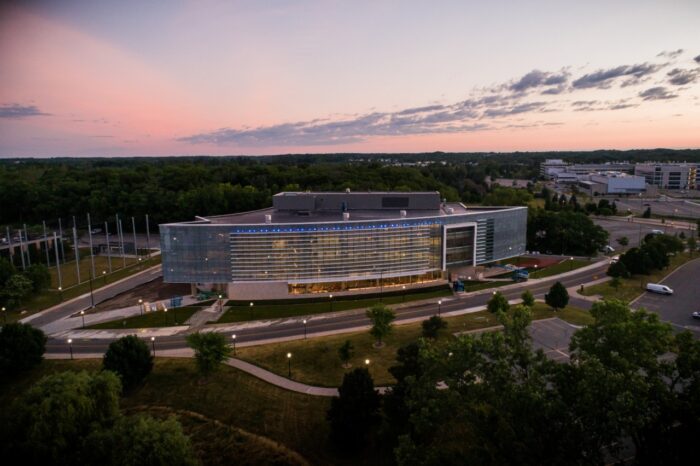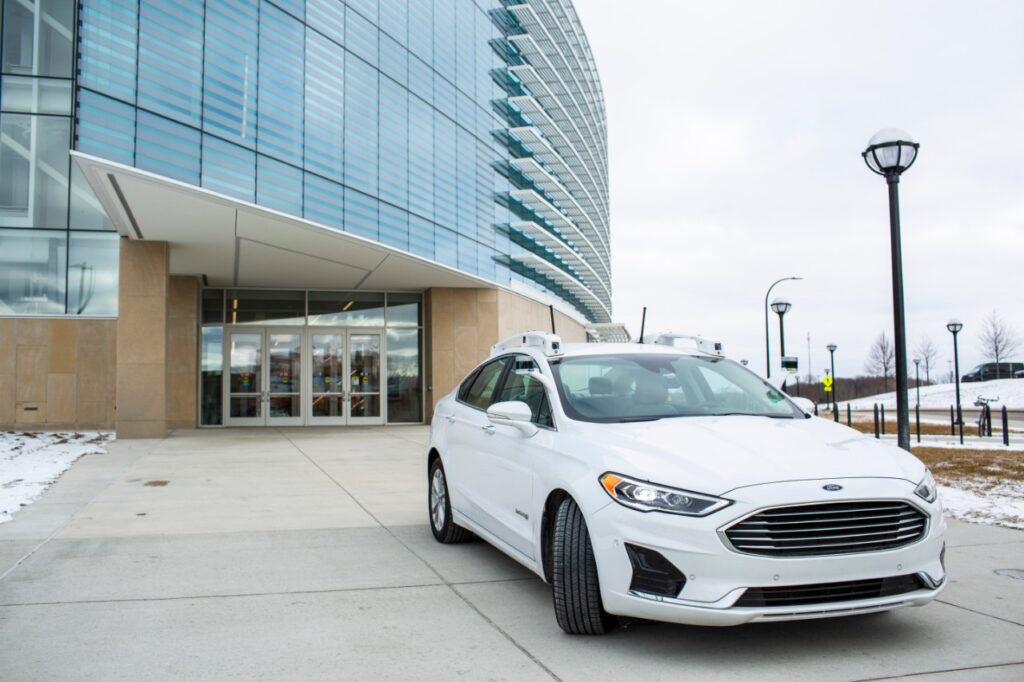The University of Michigan (U-M) and Ford Motor Company have opened a new facility dedicated to advancing robotics, autonomous vehicle technology and future mobility solutions.
U-M’s Ford Motor Company Robotics Building is a four-story, US$75m, 134,000ft2 complex situated on the north campus. As the new hub of the U-M Robotics Institute, its first three floors hold custom U-M research labs for robots that fly, walk, roll and augment the human body – as well as classrooms, offices and makerspaces. Through a unique agreement, the fourth floor houses Ford’s first robotics and mobility research lab on a university campus, as well as 100 Ford researchers and engineers.
The new facility brings together U-M researchers from 23 different buildings and 10 top-10 programs. With the new infrastructure, researchers working on two-legged disaster response robots can test them on a 30mph treadmill studded with obstacles, or on a stair-stepped ‘robot playground’ designed with the help of artificial intelligence. Biomedical engineers will have access to ‘earthquake platforms’ with force-feedback plates to guide their development of lighter-weight, more efficient prosthetic legs. And Ford engineers will explore how their upright Digit robots can work in human spaces while taking AVs from robotic computer simulations to on-road testing at U-M’s world-class proving ground just down the road.
“As Ford continues the most profound transformation in our history with electrification, connectivity and automation, advancing our collaboration with the University of Michigan will help us accelerate superior experiences for our customers while modernizing our business,” said Ken Washington, chief technology officer, Ford Motor Company. “We also will broaden our learning through daily exposure to many robotics activities, such as considering how our Digit robots not only technically can master delivering packages from autonomous vehicles but also become valued parts of our neighborhoods.”
For Ford, the facility is key to the company’s transformed and modernized research and product development processes aimed at disrupting the transportation landscape.
Key research will focus on:
- The future of moving goods more efficiently, as the pandemic further fuels online retail growth – Ford recently purchased several Digit robots, the first commercially available robot with arms and legs, to work with humans and in human spaces.
- Experimenting with a four-legged robot, Spot, to laser-scan plants – helping engineers update the original computer-aided design used to prepare to retool for new products.
- Self-driving vehicles and their role in the future of cities – Members of Ford’s autonomous vehicle team will work at the new facility. Ford’s approach incorporates purpose-built vehicles into a comprehensive and integrated autonomous vehicle operating system that enables choice, convenience and value for the movement of both people and goods.
“Autonomous vehicles have the opportunity to change the future of transportation and the way we move,” said Tony Lockwood, technical manager, Autonomous Vehicle Research, Ford Motor Company. “As this new technology rolls out, having our Ford team working on campus collaborating with the academic world will help us shorten the time it takes to move research projects to automotive engineering, unlocking the potential of autonomous vehicles.”
The Ford Robotics Building anchors the west end of the Michigan Avenue mobility testbed that begins in Detroit’s Corktown neighborhood and runs through Dearborn to Ann Arbor, where Ford and U-M are teaming with other innovators to experiment with potential mobility solutions for the future.
In collaboration with the state of Michigan and others, Ford and U-M are involved in developing this first-of-its-kind corridor for connected and autonomous vehicles that will continue the state’s mission to lead the development of smart infrastructure and future mobility. A key goal of the initiative is to close long-standing gaps in access to public transit and transportation across southeast Michigan.



